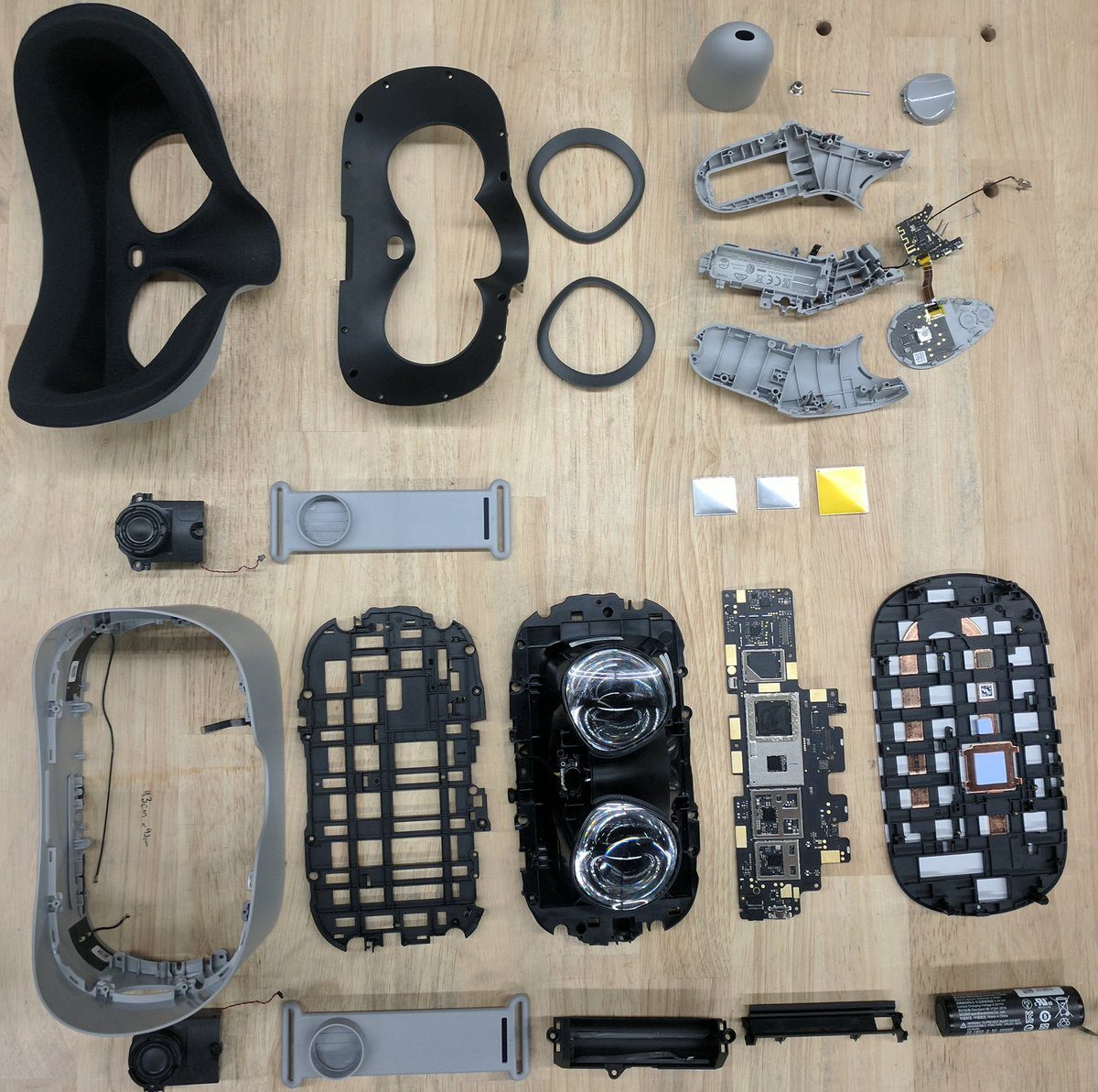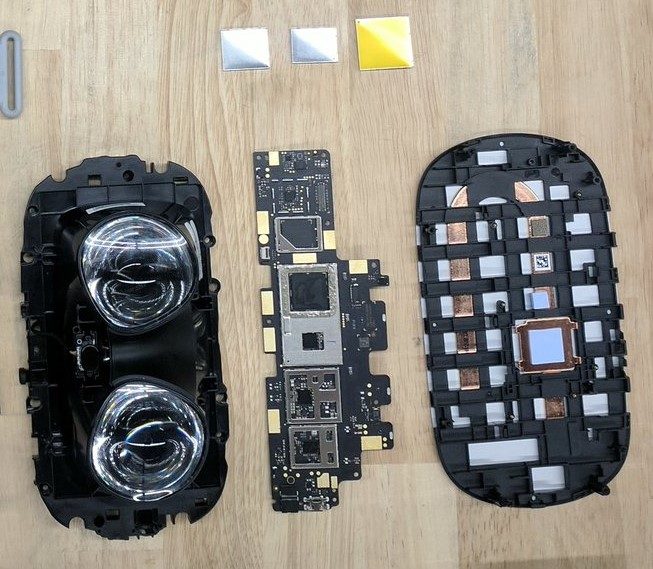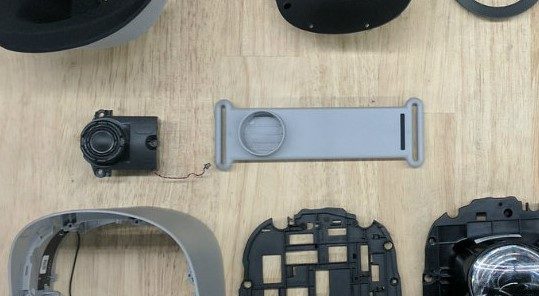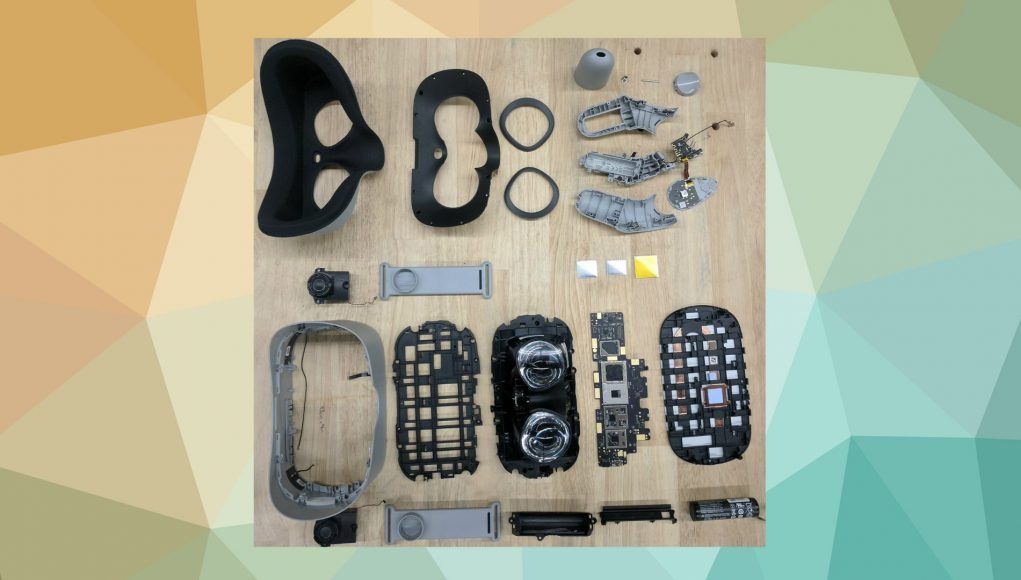Oculus Go, the company’s $200 standalone VR headset, launched at Facebook’s F8 developer conference yesterday to much fanfare—likely because everyone in attendance got one free. Now that anyone can get their hands on one, Oculus founder and ex-employee Palmer Luckey took it upon himself to post a single image of the headset laid bare, revealing a few interesting bits including what might be a replaceable battery.
Usually sites like iFixit are the first out the gate to post teardown images—admittedly their job is tad time-intensive though considering they also have to rate it on repairablity, and document every step of the way—but Luckey’s first image does reveal some information we didn’t already know.
According to a recent tweet by Luckey detailing his teardown of Go, the headset contains a standard 2600mAh cell (bottom right), which he concludes “[s]hould be an easy upgrade.” The battery appears to be a single 18650, which is a cell type is used in many laptop computer batteries.

If Luckey didn’t damage the headset beyond repair during his teardown, it could be possible to swap the battery for a higher-capacity cell in the 18650 size format, therefore lengthening the unit’s battery life and most likely also voiding the warranty in the process. Oculus Go is rated for a 2 to 2.5 hour battery life for normal use, so this might be a nifty upgrade—barring any problems with the headset’s ability to remain cool during use, that is.
On the faceplate itself, the picture reveals copper heat sink designed to better distribute heat from the Go’s Snapdragon 821 processor, the same that drives the first-gen Google Pixel smartphone. Because Go has a greater surface area for passive cooling, the processor has been overclocked to allow for a max 72Hz refresh—something Gear VR can’t do.

Another interesting bit from Luckey’s teardown image is the integrated speakers, which cleverly hides in the hinge of the headset’s side straps.

While the speakers aren’t super impressive in audio quality, they’re a nice addition for less audio-intensive sessions, that upon reflection of Luckey’s image, are also an elegant solution to a problem that plagued Gear VR’s sub-par monospeaker audio output.
We’re still waiting on a professional teardown for the full report on just how practical opening up the headset will be, and a clearer shot of all the internals, but this is certainly a promising candidate for aftermarket hardware-hackery.
While you wait, check out our deep dive review of Oculus Go to see if those two Benjamin Franklins should stay or leave your wallet for good.
Update (1:00 PM ET): A previous version of this article stated the battery seen in the image was an 18500 type cell, when Luckey implicitly confirmed that it is in fact a 18650. The article has been updated to reflect this correction.







